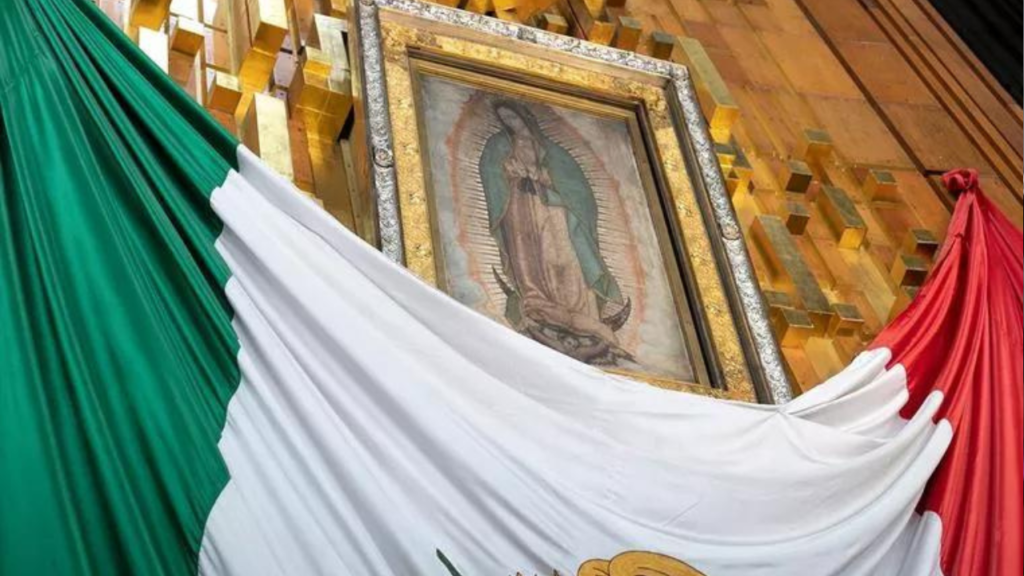Divine Intervention: Our Lady of Guadalupe and the Prophecy Come to Life
Indigenous Storytelling’s Role in the Mass Conversion Triggered by St. Juan Diego

The Miraculous Decade: Our Lady of Guadalupe and the Unprecedented Indigenous Mass Conversion
Introduction: In the early 16th century, on a hill near Mexico City, an event unfolded that would shape the course of history. Our Lady of Guadalupe appeared to an Indigenous peasant named Juan Diego in 1531, a moment that marked the beginning of a remarkable decade of mass conversion. Within ten years, between 9 and 10 million of Juan Diego’s fellow Indigenous people, who had previously adhered to polytheistic beliefs and harbored suspicions toward the conquering Spaniards’ religion, embraced the Catholic faith.
The Miraculous Image: The catalyst for this unprecedented mass conversion is often credited to the striking image of Our Lady of Guadalupe. Miraculously imprinted on Juan Diego’s tilma, or cloak, on December 12, 1531, the image became an iconic symbol and is celebrated annually as her feast day throughout the Americas. The image itself, resembling an Indigenous woman, captured the hearts and faith of millions.
The Feat of Faith: However, what makes this mass conversion truly extraordinary is that only a few of the newly converted Indigenous individuals ever laid eyes on the iconic tilma. Despite having to traverse rough terrain for days to receive baptism and sacraments from a handful of scattered Spanish missionary priests, the majority never witnessed the revered image. Instead, their conversion was fueled by the profound impact of the spiritual phenomenon and the collective faith inspired by Juan Diego’s encounter with Our Lady.
The Spiritual Transformation: The period between 1531 and the subsequent decade witnessed a spiritual transformation of unparalleled magnitude. The Indigenous people, who were adamantly polytheistic and wary of the Spaniards’ religion, underwent a remarkable shift in belief. This period of mass conversion, acknowledged as the largest in history, marked a testament to the resilience of faith and the profound influence of Our Lady of Guadalupe’s appearance on the spiritual landscape of the region.
The Role of Indigenous Storytelling: Integral to this narrative is the role of Indigenous storytelling traditions. These traditions played a crucial role in bridging cultural gaps and preparing the ground for mass conversion. The storytelling wove a tapestry of cultural understanding, making the message of Our Lady accessible and relatable to those who embraced a polytheistic worldview.
Conclusion: In conclusion, the decade following Our Lady of Guadalupe’s appearance to Juan Diego stands as a testament to the transformative power of faith. The credit for this mass conversion, the largest in history, is often attributed to the miraculous image on Juan Diego’s tilma. However, the deeper story lies in the unwavering faith of those who, without witnessing the image, embraced a new spiritual path. This extraordinary chapter in religious history reflects not only the power of divine intervention but also the resilience of faith in the face of cultural and spiritual shifts. The legacy of Our Lady of Guadalupe continues to reverberate, reminding us of the enduring impact of faith and the miraculous events that shape the course of civilizations.
“Harmony of Faith: Guadalupe and the Enchanting Song of Conversion”
Introduction: The 16th-century spiritual landscape of central Mexico witnessed an extraordinary phenomenon—the sudden and profound embrace of the Catholic faith by millions of Indigenous people. Amidst the myriad theories surrounding this unparalleled conversion, “Guadalupe and the Flower World Prophecy” stands out, offering a compelling narrative that transcends conventional explanations. Authored by a husband-and-wife duo, the book posits that it was not merely the iconic image of Our Lady of Guadalupe but the enchanting story of Juan Diego’s encounters, conveyed through song in the Nahuatl language, that catalyzed this monumental shift.
The Cultural Tapestry: Juan Diego, an Indigenous peasant whose sole language was Nahuatl, became the vessel through which a captivating tale unfolded. The Nahua people, including the Aztecs, had settled in central Mexico long before Hernán Cortés’ conquest in 1519. Nahuatl, a language deeply intertwined with their cultural identity, served as the medium through which the story of Juan Diego’s encounters with Our Lady resonated.
The Power of Song: According to the authors, the story wasn’t merely spoken but sung—a tradition ingrained in the Nahua culture. The Nahua people’s proficiency in storytelling through song, dance, and musical instruments played a pivotal role in disseminating narratives swiftly and effectively. Children were actively trained in the art of singing and memorization, ensuring the longevity and widespread transmission of these cultural tales.
Missionary Manuscripts: The arrival of Franciscan friars as missionaries marked a crucial juncture. Many of these friars learned Nahuatl and painstakingly transcribed numerous song-poems over the years. Astonishingly, the Gonzálezes discovered that identical texts of the same songs appeared in documents produced by friars in different regions and at different times. This remarkable consistency attested not only to the songs’ far-reaching journeys but also highlighted the Nahua people’s exceptional memorization skills.
The Blossoming Revelation: Central to the conversion narrative is the first detailed account of Mary’s appearances at Tepeyac, preserved in a Nahuatl-language prose text called the Nican Mopohua. Recorded in 1649 by Father Luis Lasso de la Vega, the text vividly paints a picture filled with details mirroring the Nahua spiritual tradition—the “Flower World” or Xochitlalpan. Mary instructs Juan Diego to gather flowers from the hill, and when they cascade from his tilma, the Guadalupe image miraculously reveals itself.
Conclusion: In conclusion, “Guadalupe and the Flower World Prophecy” proposes a harmonious fusion of faith and culture that goes beyond the visual representation of the Guadalupe image. The enchanting song of Juan Diego’s encounters, woven into the fabric of Nahuatl storytelling traditions, emerges as a powerful catalyst for the unprecedented mass conversion. This unique perspective invites us to appreciate the intricate layers of cultural exchange, faith, and the enduring legacy of a tale sung across the hills and valleys of central Mexico.